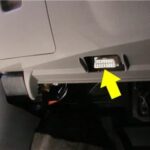Connecting your ELM327 OBD2 scanner to your device is the first crucial step in accessing your vehicle’s diagnostic data. While often straightforward, understanding the pairing process, especially regarding pairing codes, ensures a smooth and efficient connection. This comprehensive guide will walk you through everything you need to know about Elm327 Obd2 Pairing Codes, ensuring you can effortlessly link your scanner and start diagnosing your car like a pro.
Understanding the ELM327 OBD2 Pairing Process
Before diving into pairing codes, let’s clarify the basics. ELM327 scanners communicate with your devices (smartphones, tablets, laptops) primarily via Bluetooth or Wi-Fi. Pairing is the process of establishing a secure wireless connection between your scanner and your chosen device, allowing data to flow seamlessly.
Most modern ELM327 scanners are designed for user-friendly pairing, often requiring minimal input. However, understanding the nuances, including when and why pairing codes might be needed, can save you time and frustration.
Do ELM327 OBD2 Scanners Always Need a Pairing Code?
The short answer is no, not always. Many ELM327 Bluetooth scanners, especially newer models, employ “just works” pairing. This streamlined process automatically pairs devices without requiring a PIN or pairing code. You simply initiate the pairing from your device’s Bluetooth settings, select your ELM327 adapter from the list of available devices, and the connection is established.
However, there are instances where you might encounter a pairing code request:
- Older ELM327 Scanners: Older or budget-friendly ELM327 adapters might still utilize traditional Bluetooth pairing methods that require a PIN.
- Specific Devices or Operating Systems: Certain devices or operating systems might prompt for a pairing code as a security measure, even with newer ELM327 scanners.
- Incorrect Pairing Procedure: Attempting to pair the device from within a car diagnostic app before establishing a Bluetooth connection through your device’s settings can sometimes lead to a pairing code request.
Common ELM327 OBD2 Pairing Codes
If you are prompted for a pairing code, thankfully, it’s usually a standard, easily accessible code. Here are the most common pairing codes for ELM327 OBD2 scanners:
- 1234
- 0000
- 6789
These codes are widely used and often work across various ELM327 scanner brands and models. Always try “1234” first, as this is the most frequently used default pairing code.
Alt text: ELM327 Bluetooth OBD2 adapter plugged into a car’s OBD2 port, ready for pairing.
Step-by-Step Guide to Pairing Your ELM327 OBD2 Scanner (Bluetooth)
Here’s a general guide to pairing your ELM327 Bluetooth scanner. Specific steps may slightly vary based on your device and scanner model, so always refer to your scanner’s manual and device instructions if needed.
-
Plug in Your ELM327 Scanner: Locate the OBD2 port in your vehicle (usually under the dashboard on the driver’s side) and securely plug in your ELM327 adapter.
-
Turn on Vehicle Ignition: Turn your car’s ignition to the “ON” position. The engine does not need to be running, but the scanner needs power to initiate pairing. You should see indicator lights on your ELM327 scanner illuminate.
-
Enable Bluetooth on Your Device: Go to your smartphone, tablet, or laptop’s settings and turn on Bluetooth.
-
Search for Bluetooth Devices: Initiate a Bluetooth device search on your device. It should scan for nearby Bluetooth devices.
-
Select Your ELM327 Scanner: From the list of available Bluetooth devices, look for your ELM327 scanner. It might appear as “OBDII,” “ELM327,” “OBD-II,” or a similar identifier. Select your scanner from the list.
-
Enter Pairing Code (If Prompted): If you are asked for a pairing code, enter one of the common codes mentioned earlier (“1234,” “0000,” or “6789”). In many cases, pairing will proceed automatically without a code.
-
Pairing Confirmation: Your device should indicate successful pairing with the ELM327 scanner. You might see a “Connected” status next to the scanner’s name in your Bluetooth device list.
-
Launch Your OBD2 App: Now, open your chosen OBD2 diagnostic app (like Torque Pro, OBD Fusion, Car Scanner ELM OBD2, etc.).
-
Connect Within the App: Within the app’s settings or connection menu, select “Bluetooth” as the connection type and choose your ELM327 adapter from the list of available Bluetooth devices. The app should now connect to your scanner and your vehicle’s data.
Alt text: Screenshot of an OBD2 scanner app interface on a tablet, showing a successful connection and real-time vehicle data.
Troubleshooting Pairing Issues
If you encounter problems pairing your ELM327 OBD2 scanner, consider these troubleshooting tips:
- Verify Scanner Compatibility: Ensure your ELM327 scanner is compatible with your vehicle’s OBD2 protocol and your chosen device and operating system. Check the scanner’s specifications and compatibility lists.
- Restart Devices: Sometimes, simply restarting your smartphone/tablet and unplugging and replugging the ELM327 scanner can resolve pairing glitches.
- Forget and Re-pair: In your device’s Bluetooth settings, “forget” or “unpair” the ELM327 scanner. Then, repeat the pairing process from the beginning.
- Check for Interference: Bluetooth interference from other electronic devices can sometimes hinder pairing. Try pairing in an area with fewer electronic devices nearby.
- Consult Manuals: Refer to the user manuals for both your ELM327 scanner and your OBD2 app for specific troubleshooting steps or pairing instructions.
- Test with a Different Device/App: If possible, try pairing your scanner with a different smartphone, tablet, or laptop, or try using a different OBD2 app to rule out device-specific or app-related issues.
Conclusion
Pairing your ELM327 OBD2 scanner is usually a quick and easy process, especially with modern “just works” Bluetooth technology. While pairing codes are not always required, knowing the common codes and understanding the pairing steps will equip you to connect your scanner successfully. By following this guide and troubleshooting tips, you’ll be well on your way to harnessing the power of OBD2 diagnostics and gaining valuable insights into your vehicle’s health and performance.
